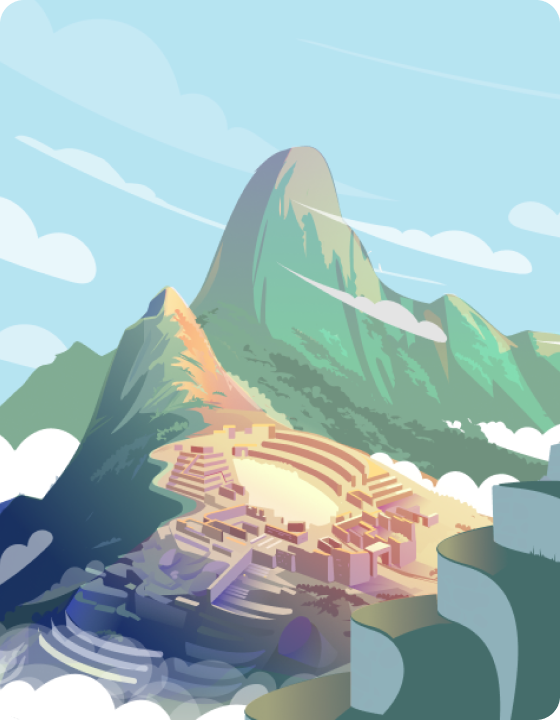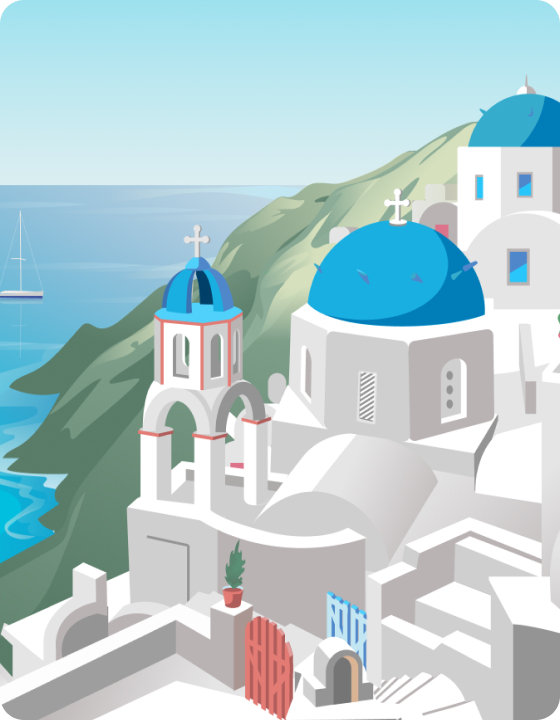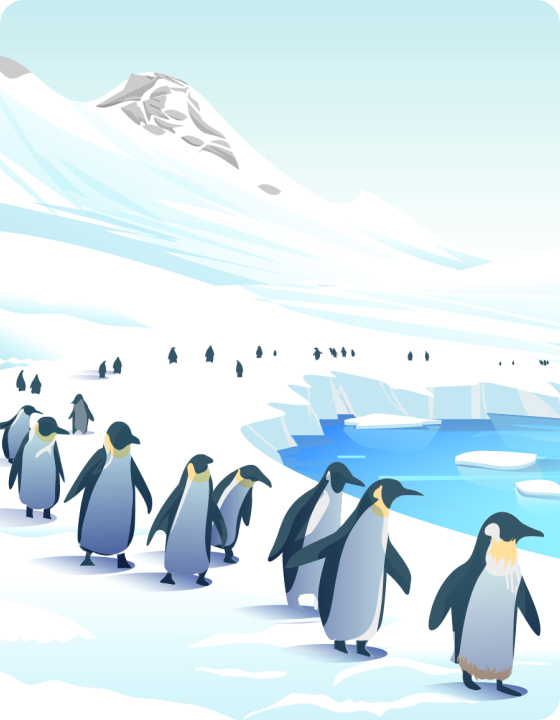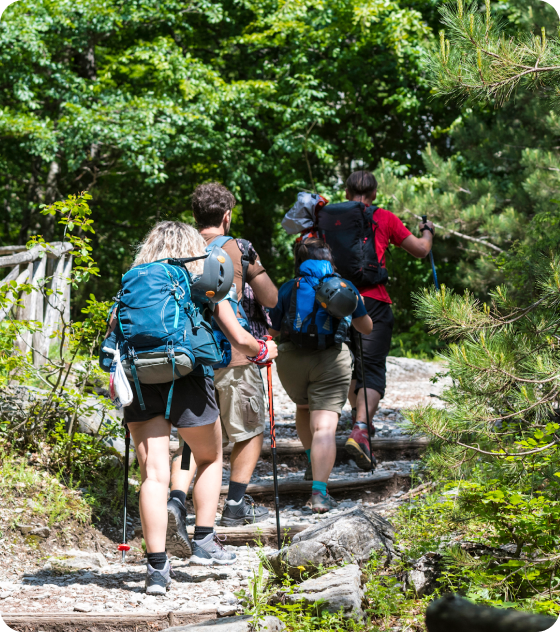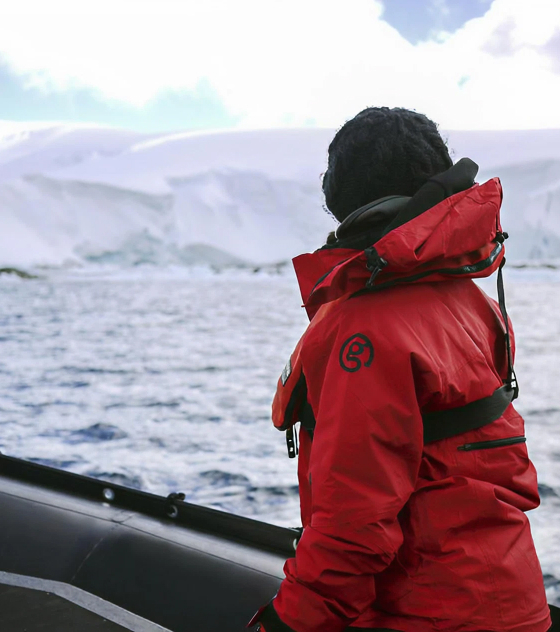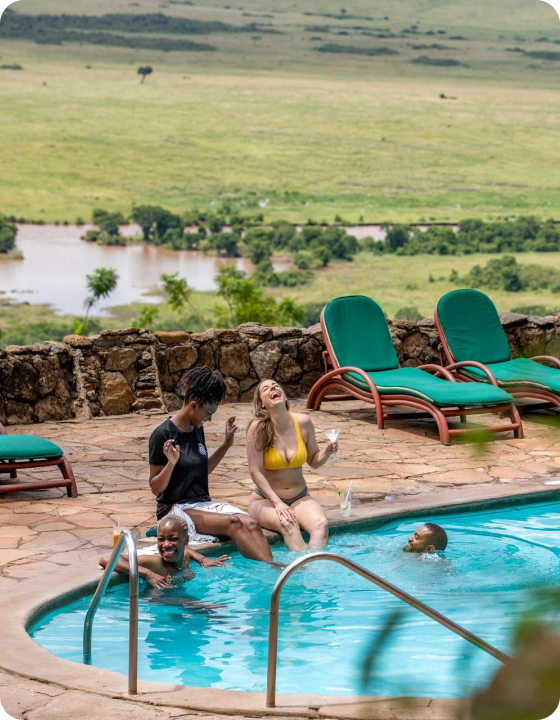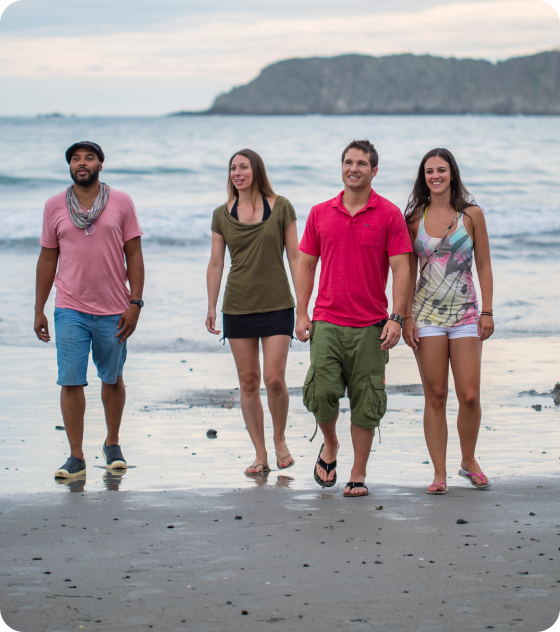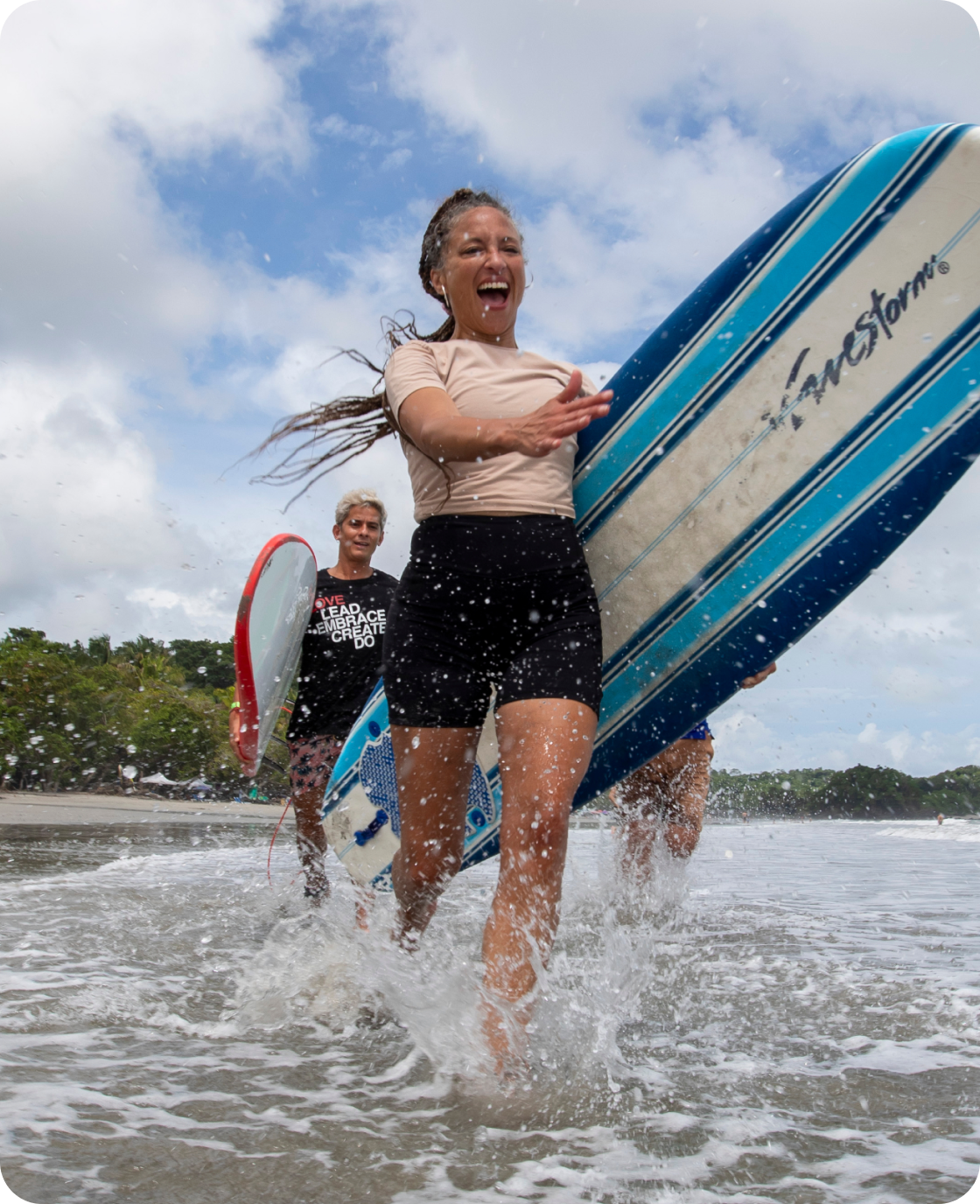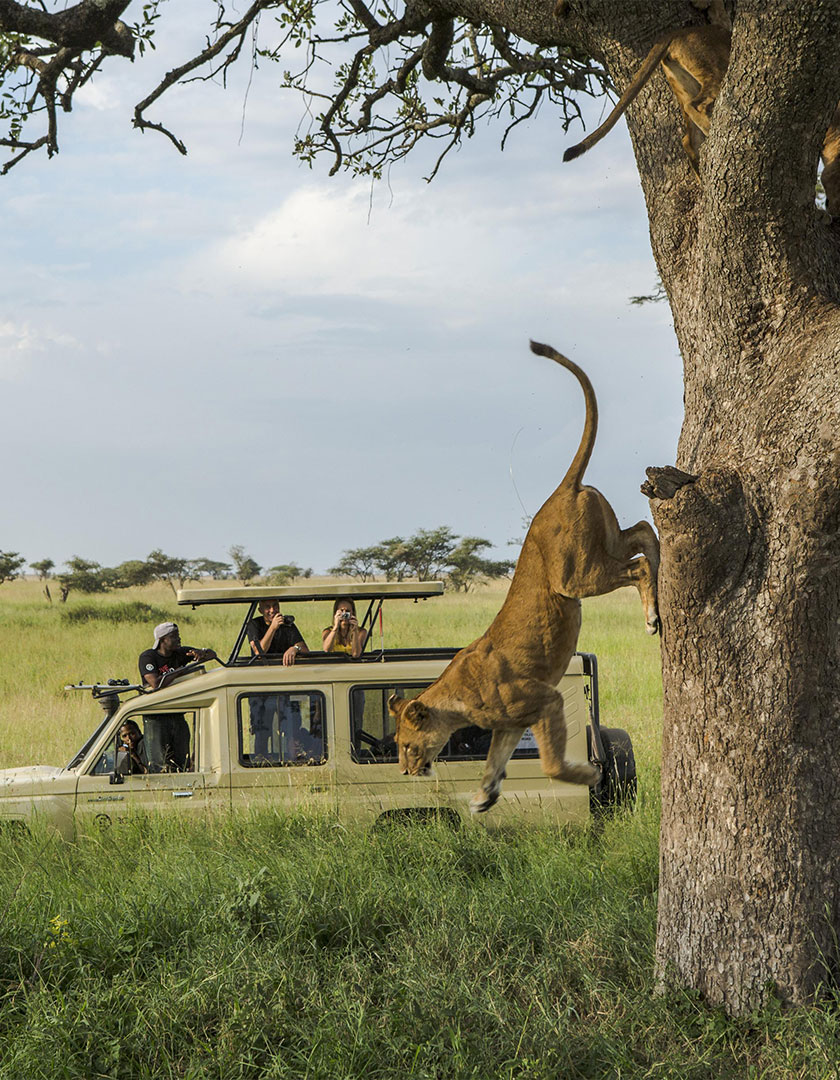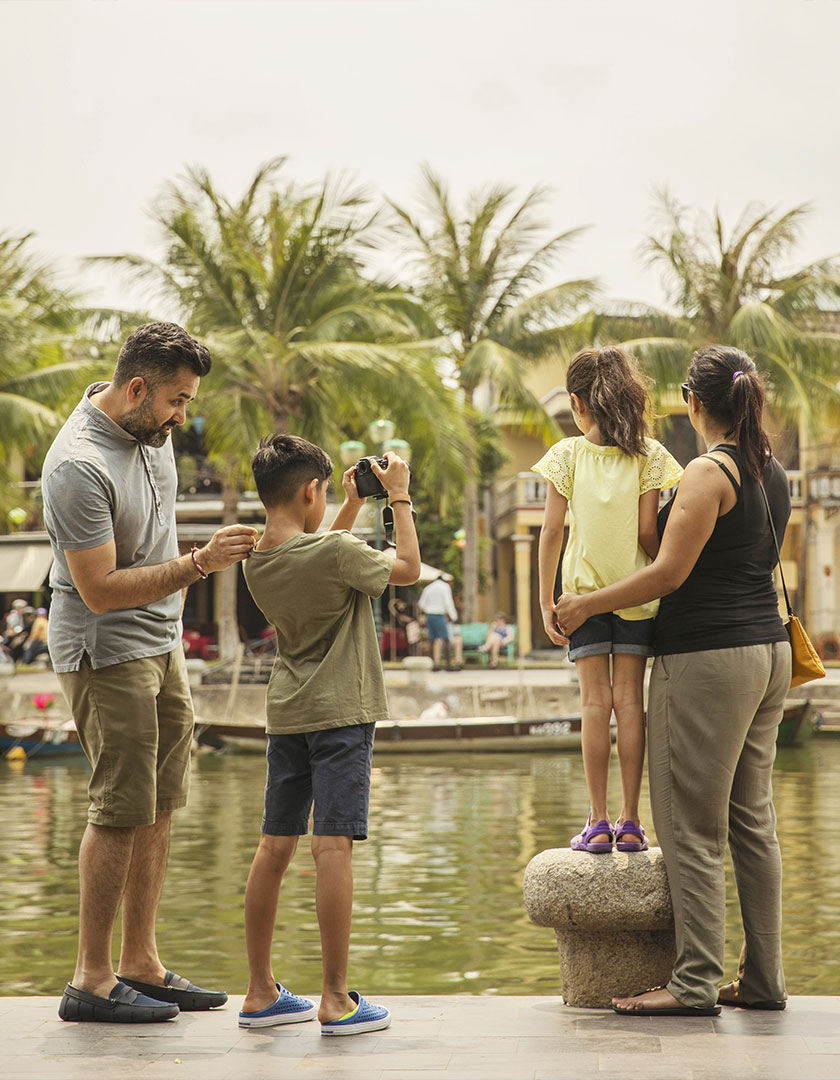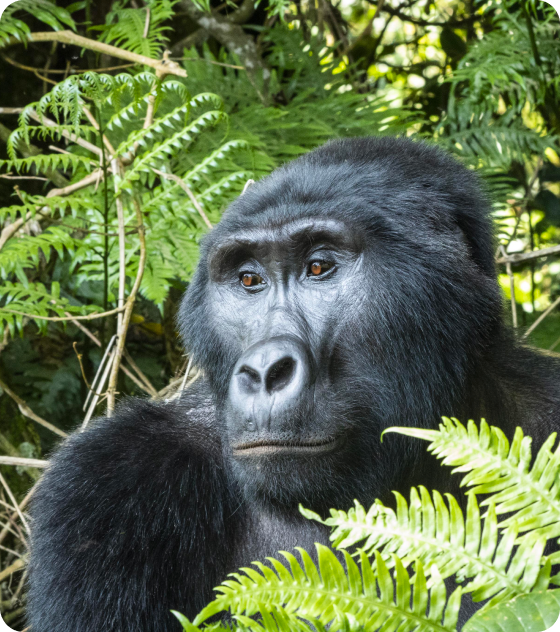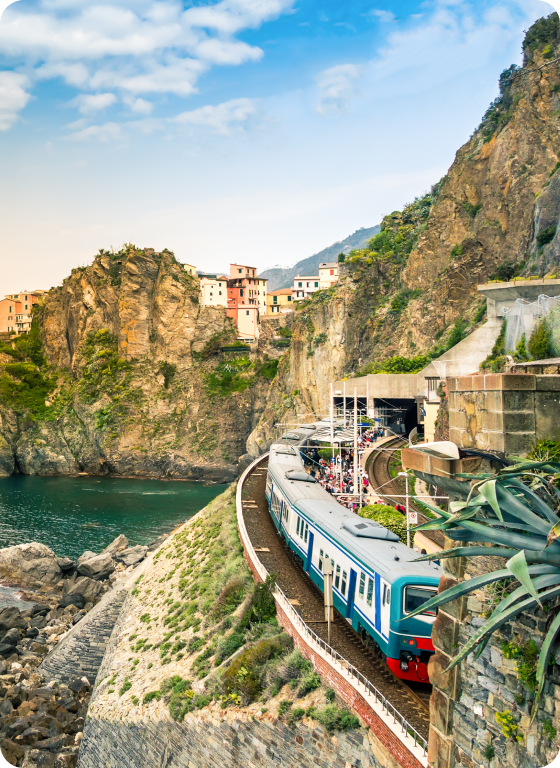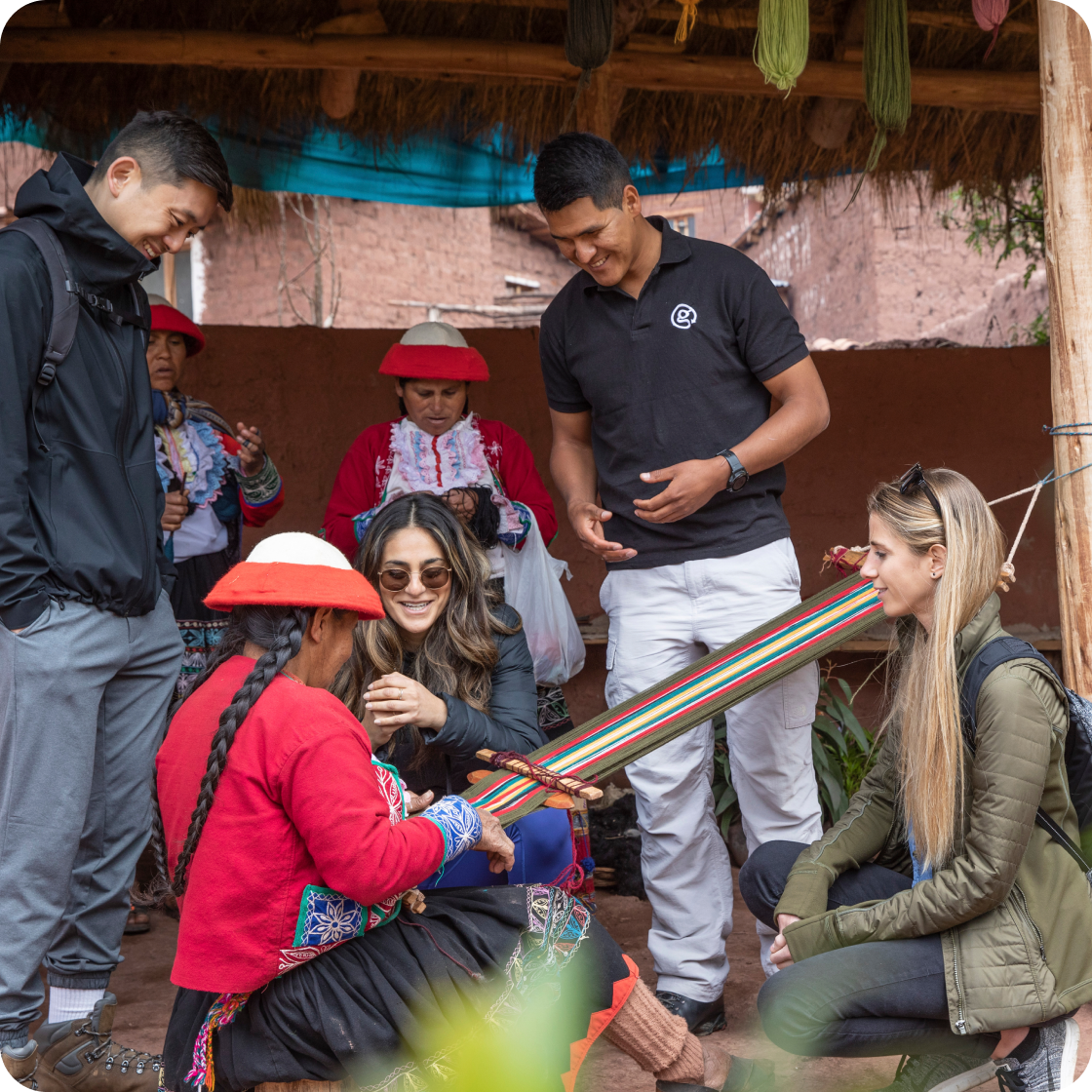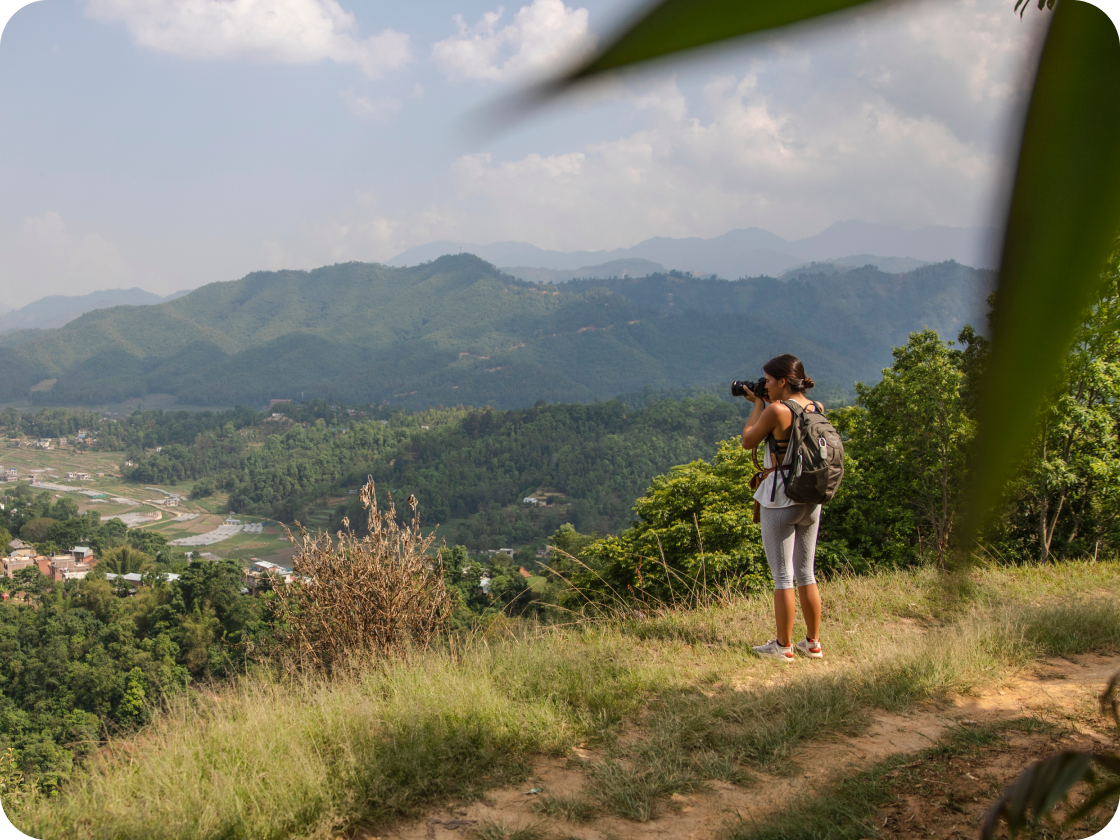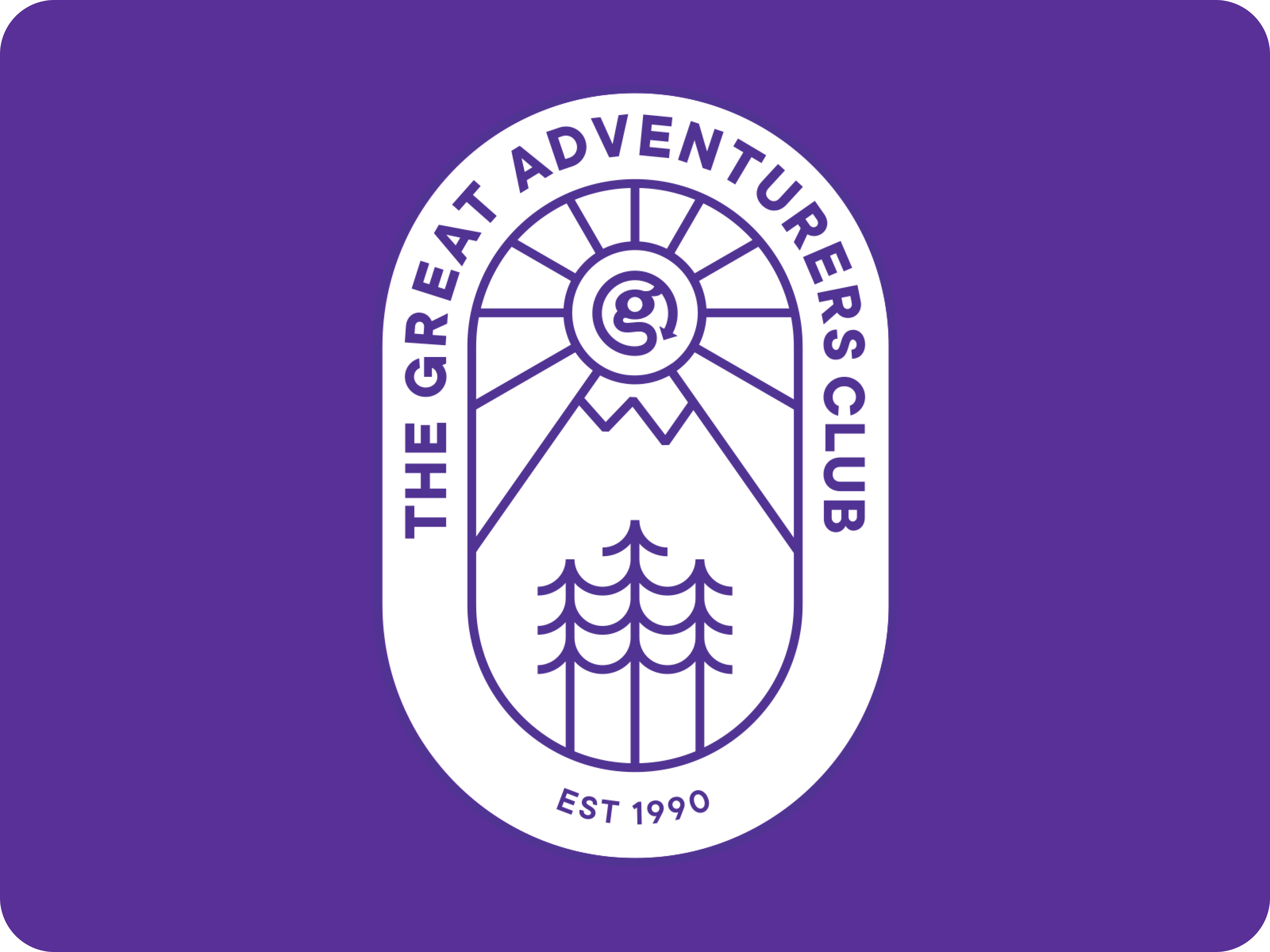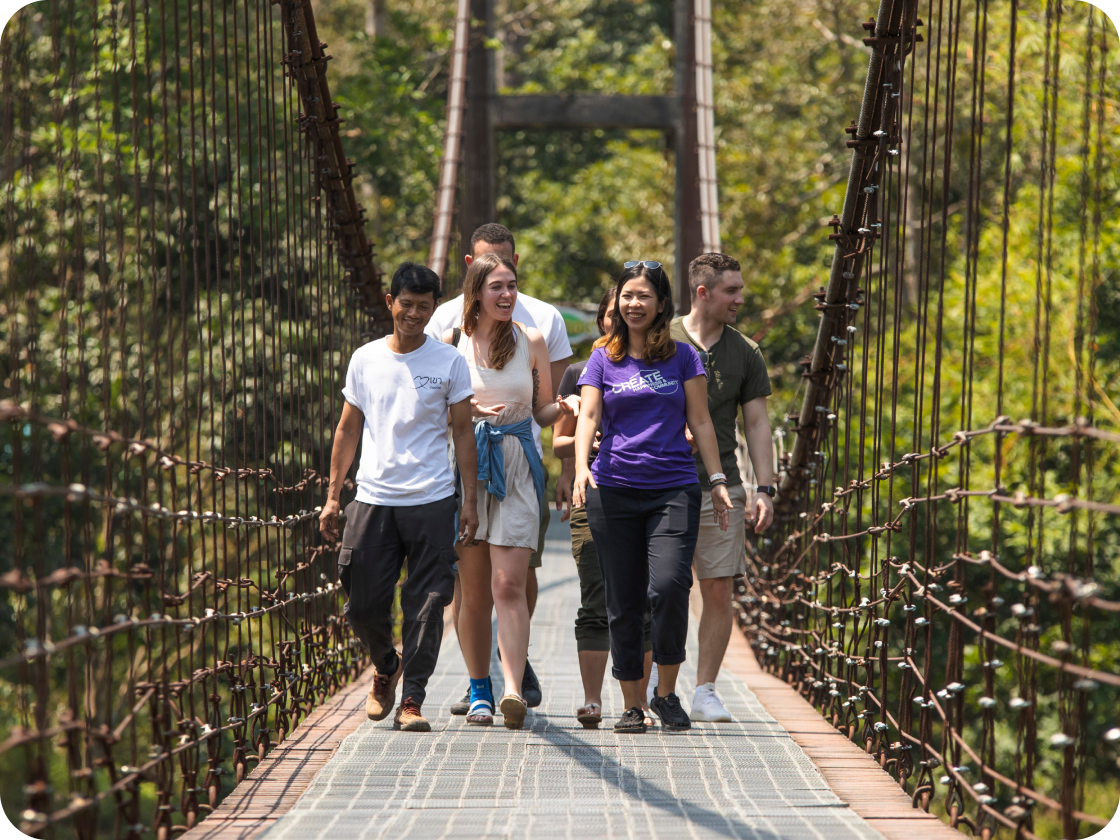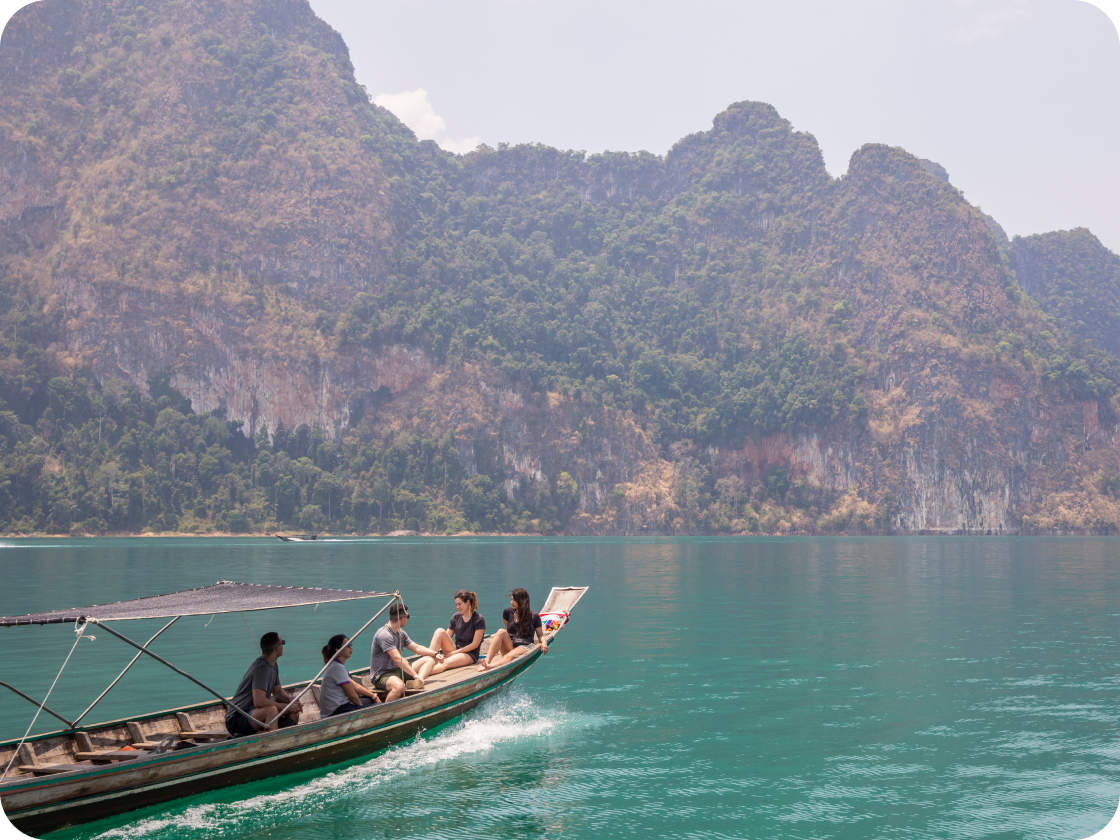Antarctica Expedition Cruises
This isn’t just a cruise — it’s a true expedition to the edge of the Earth. Antarctica with G Adventures means more landings, more wildlife, and way more time off the ship exploring this legendary frozen frontier.
Launching for the 2025/2026 season, our updated adventure-ready vessel gets you closer to the action. And with a crew of passionate scientists, naturalists, and guides onboard, every moment comes alive — with storytelling, safety, and polar expertise at the heart of it all.
The excursions are epic. The value’s unbeatable. And the crew? They’ll have you feeling like family before your boots hit the ice. This is Antarctica, done the G Adventures way.
Featured Antarctica Cruises
Holy ship, we’ve got a new ship!
Think of it as our polar ship glow-up. Launching for the 2025/2026 season, we have an updated Expedition ship that blends comfort and capability in all the right ways.
Extensively refurbished, it features upgraded engines, refreshed cabins with ensuite bathrooms, and larger social spaces for a perfect mix of slick performance, creature comforts, and that community feel.
And when it’s time to brave the Drake? Its Ice Class 1A technology, upgraded stabilizers, and a modern propulsion system deliver smoother, quieter sailing, and all with a significantly smaller carbon footprint.
With just 128 passengers, we aim to get each guest out on excursions twice a day (weather-permitting) — something larger vessels simply can’t offer. That means more time off ship doing what really matters: being fully immersed in Antarctica’s magic.

- Deluxe Cabin

- Lower Deck Cabin

- Owners Suite Cabin

- Owners Suite Cabin

- Suite Cabin

- Suite Cabin

- Suite Cabin

- Superior Cabin

- Superior Cabin

- Triple Cabin

- Clipper Club

- Clipper Club




Antarctica, just add you
Meet the G Expedition team
Experts in everything from geology to marine biology and polar history, the members of our team are always eager to share their infectious passion for the plants, animals, and people you’ll encounter. Add in professional hotel staff and a seasoned crew, and you’ll be more than comfortable during your adventure on the water.







10:1 passenger-to-expert ratio
More on-hand experts means deeper access and greater understanding of the planet’s most amazing places. Our experts’ lectures, Q&A sessions, and personal reflection deliver a personalized and intimate perspective on these faraway shores.
Wear your bragging rights with your very own G Expedition parka
Yours included with every booking
We wouldn’t send you all the way to the ends of the Earth without making sure you were prepared for the weather. All G Expedition passengers receive their own exclusive parka, included with their tour.
Cold comfort
A high-performance parka designed specifically for adventuring in the polar regions’ frozen climate, the official G Expedition parka combines functional cold-weather features like breathable waterproof fabric, a removable 5cm (2 in) ThinsulateTM liner, reflective taping by 3M, and a removable hood with microfleece lining.


Expedition at a glance
The 70 refurbished cabins each feature lower beds; private ensuite bathrooms with a shower, toilet and wash basin, shampoo and shower gel, hairdryer; 220v/50Hz electrical outlets; individual temperature controls and outside views of the passing polar landscapes via either portholes or windows.


- Located on the Main Deck
- Approximately 13.5 sq. m (145 sq. ft.)
- Includes 2 lower and 1 upper berth and a porthole
- Ensuite bathroom with hairdryer

- Located on the Lower deck
- Approximately 11 sq. m (115 sq. ft.)
- Includes 2 lower berths and one porthole
- Ensuite bathroom
- Located on the main deck
- Approximately 11 sq. m (115 sq. ft.)
- Includes 2 lower berths and one porthole
- Ensuite bathroom
- Located on the main deck, midships (Deck 2)
- Approximately 11 sq. m (115 sq. ft.)
- Includes 2 lower berths and 2 windows
- Ensuite bathroom

- Located on the Captain's Deck or Upper Deck
- Approximately 12 sq. m (132 sq. ft.)
- Includes 2 lower berths and large view window
- Ensuite bathroom

- Located on the Captain’s Deck
- Approximately 13 sq. m (144 sq. ft.)
- Includes 2 lower berths and a large view window
- Ensuite bathroom

- Located on the Captain’s Deck
- Approximately 20 sq. m (215 sq. ft.)
- Include a double bed (comprised of 2 twin berths), a couch and sitting area, and a large view window
- Ensuite bathroom

- Located on the Bridge Deck at the stern
- Approximately 19 sq. m (208 sq. ft.)
- Includes a double bed (comprised of 2 twin berths), large sitting area with couch
- Panoramic window facing either aft or port or starboard (depending on the cabin)
- Ensuite bathroom
Amenities
- Dining Room (125 seats, 160 sq. m.)
- Main Lounge (125 seats, 170 sq. m)
- Bar (30 seats, 70 sq. m)
- Library (20 seats, 40 sq. m.)
- BBQ facilities
- Theatre style auditorium for presentations
- Observation deck (60 sq. m)
- Sun deck (150 sq. m)
- 2 jacuzzis
- 24 hour beverage station - tea and coffee available
- Gym with a selection of fitness equipment (15 sq. m)
- Medical Center with licensed Doctor
- Boutique Gift Shop selling essentials, souvenirs and clothing
- Wifi (data usage charges apply)
- On board laundry service (charges apply)
Technical specifications
- Built: Yugoslavia, 1976 (Remodeled in 2017)
- Ice class: Ice Class 1A
- Length: 102 metres (331 feet)
- Breadth: 16.2 metres (53 feet)
- Max Draft: 4.65 metres
- Gross Tonnage: 4,614 ITC
- Maneuvering speed: 7 knots @ 0.19 MT/HR + 2.02 MT/day at sea Aux Fuel Consumption (MGO)
- Economical service speed: 9.1 knots @ 6.28 MT/day + 2.02 MT/day at sea Aux Fuel Consumption(MGO)
- Stabilizers: 2 x Sperry Gyrofin (1998), (P/S)
- Passenger Group Size: 128 max
- Crew: 14 expedition guides maintaining the 10:1 guest to expert ratio
Add to your experience
Antarctic kayaking* Download the kayaking package
Nothing connects you to the blissful solitude and fragile beauty of the polar regions like paddling through them in a low-slung kayak. Kayaking excursions depend on the weather, but we’ll try our best to get you out as much as possible. Participants should come with a working knowledge of strokes, entries, and exits.
Antarctic camping* Download the camping package
Experience the sounds of heaving ice, the fresh scent of the sea, and the crisp air of Antarctica in the polar night by camping out on the ice itself. We provide all the tents, warm sleeping bags, and other equipment.
Tierra del Fuego National Park Visit - Ushuaia
Explore this stunning coastal national park extending 630 sq km. We'll take care of the transport, the park entrance fee, and take you to scenic lookouts in the southern portion of the park. Pass Valle Rio Pipo on the way to Austral Fueguino train station. Opt to take the End of the World train before visiting Lago Roca and Bahía Lapataia. Keep an eye out for a variety of birdlife and spectacular colours in the fall.
Please note: The entirety of this activity (including the End of the World train) can only be booked on the ground locally.
*Kayaking and camping excursions are only available for booking prior to departure, as space is limited. To add either of these excursions to your Antarctica cruise, simply call us and reference your booking number.
FAQs about Antarctica Expedition Cruise
The capacity for the Expedition is 128 passengers. In addition, there will be at least 14 expedition experts on board — specialising in everything from marine biology to ornithology — as well as supporting staff too.
There are 70 different cabins on board the Expedition, with all rooms housing en-suite bathrooms with added toiletries and ocean-facing portholes or windows. Suites will include a double bed and larger sea-view windows, while multishare twin and triple cabins provide travellers with a sociable and cheaper option too.
Yes, Wi-Fi is available — though data usage charges will apply.
The electrical current provided on board is 220 volts, which can be accessed using standard European two-pin plugs. Travellers from regions using different voltages or plugs may want to bring a universal adapter.
The new 102 metre (335 ft) long ship features a restaurant, a large presentation lounge, a library, a fitness area, a gift shop, laundry services, a medical center with a licensed doctor, a sun deck, two Jacuzzis, barbecue facilities, and an observation deck too. There’s also a bar on board — catering to 30 patrons at any one time — as well as a round-the-clock beverage station.
The new ship is also built with an Ice Class 1A for reinforced safety and maneuverability, as well as a refurbished propulsion system and updated stabilisers — ultimately offering a smoother ride to help reduce motion sickness during rough crossings across the Drake Passage.
We estimate that the overall carbon footprint per person per day will drop by up to 30% with the addition of the new ship.
The Expedition offers two shore excursions per day, using 11 zodiacs to ensure travellers enjoy two daily excursions throughout the trip, with every traveller having the opportunity to leave the ship and step onto the ice at each stop.
These excursions include landings on the Antarctic Peninsula and guided visits to locations like Tierra del Fuego National Park in Patagonia.
For those seeking added adventure, kayaking and overnight camping on the Antarctic continent are available as optional, paid experiences.
Yes — the Expedition includes a dedicated room where you can store all of your jackets and other pieces of clothing to dry off after excursions. On-board laundry services are also available.
No. The Expedition offers complimentary rain boots for all guests so you can pack just a little bit lighter! Essential for zodiac landings, these pull-on waterproof boots are yours for the duration of your voyage. As some sizes might not be available, please check your trip details document before you travel.
The new ship is well heated throughout, so on board, you won’t need to wrap up warm. However, on excursions we recommend bringing waterproof clothing, hats, gloves, and layered, warm clothing. We also highly recommend bringing binoculars and a decent camera too.
FAQs for Antarctica (Destination)
Visa requirements may change, so for the most up-to-date information we recommend using our Entry Requirements tool.
There are no specific vaccination requirements to enter Antarctica. However, as advice can change, check out our Entry Requirements tool for the most up-to-date details on vaccination requirements.
Antarctica is the coldest, driest, and windiest continent on Earth, and the weather is no joke here. Temperatures outside of the austral summer (late November to early March) are inhospitable, regularly reaching -30°C (-22°F) with 24 hours of darkness. Even in the coastal regions during the summer, it can reach -2°C (28°F), so you’re advised to wrap up warm! Even though it can be very cold and windy here, the sun can be strong — particularly when it’s reflected off the icy landscape — so bring plenty of SPF sunscreen and sunglasses.
The best time to visit Antarctica is during the austral summer, which runs from late November to early March. This season allows for 24-hour daylight for extended excursions and exploration, and it is the best time to see wildlife too. This is the peak season for hatching penguin chicks, and there are plenty of whales here too — particularly during the months of February and March.
Temperatures tend to float around the -2 to 8°C (28 to 46°F) mark at this time of year. Outside of these months, Antarctica is closed to tourism due to extreme cold, darkness, and inhospitable sea ice blocking access.
With a bit of luck, you’ll be able to spot penguins (emperor, adélie, gentoo, chinstrap), seals (leopard, elephant, weddell, crabeater), whales (humpback, minke, fin, orca), and seabirds (albatross, skuas, petrels).
You’ll need layered, waterproof, and windproof clothing. We recommend you bring waterproof pants or trousers, woolly hats, gloves, walking boots, and anything else that would make you comfortable in cold weather. You should also bring sunscreen and moisturizer, as it can get very windy here.
Your expedition begins and ends in Ushuaia, Argentina. Flights typically arrive in Ushuaia via Buenos Aires. Please contact a Global Connection Officer for a quote on airfare.
All of our Antarctica trips and expeditions cross the famous Drake Passage, which is notorious for its rough seas. We recommend bringing seasickness medication for the entirety of the trip, and if you are unsure of which type to bring, then please consult your physician or doctor prior to travel.
In a word — yes. Travel insurance is mandatory for joining any of our trips, and that includes Antarctic cruises and expeditions. You’ll need to make sure that all of the activities included on the tour are covered, and we also strongly recommend that the policy also covers personal liability, cancellation, and loss of luggage and personal effects too.
Every traveller is different and therefore spending money requirements will vary. Some travellers may drink more alcohol or soft drinks than others, while other travellers like to purchase more souvenirs than most. Please consider your own spending habits when it comes to allowing for drinks, shopping and tipping your expedition experts and support staff.
Please note that all payments on board the Expedition are cashless. Credit cards are accepted and the currency for all purchases is USD $.
All of our Antarctica cruises have a medical centre with a licensed doctor or physician onboard in case of any emergencies.
Our Antarctic expeditions last anywhere from 11 days through to 22 days. Our longer trips tend to include the Falkland Islands and South Georgia too.
Jonathan Green
Jonathan is a native of England, graduating BSc Geology with Geography from the University of North London in 1984. He travelled and lived in France and Spain for four years, before training as a naturalist with the Galápagos National Park Service in 1988. He was elected Fellow of the Royal Geographical Society of London in 1989.
For nearly three decades, Jonathan has worked in the Galapagos Islands and has several thousand dives in the surrounding waters. An early fascination with whale sharks led to the founding of the Galapagos Whale Shark Project where he is the Project Founder and Director.
He has also worked in the Amazon, Antarctica, the Arctic, Africa, Central and South America, and Indonesia as a diver, photographer on land and underwater, leading and participating in expeditions and expedition travel. In 2009, he led a dive expedition to explore the undersea world of Antarctica in a 70 ft sailboat. On screen, he appeared on “BBC's Planet Earth II” and is the star of the documentary “Galapagos: Secrets of the Ocean Giants.”
Meru Ferrari
Meru grew up in Buenos Aires, Argentina and went on to study tourism in university where she won a scholarship from the United Nations to specialize in disaster risk reduction and sustainable development. She went on to work for the Argentinean Tourism Board and eventually started working with Expedition ships shoreside until she jumped onboard as Expedition Guide, which is where she most loves to be. She has a keen interest in history, culture, geography and nature, which propelled her to start lecturing in the capacity of Polar Historian. She loves to share her passion about the polar regions and strongly believes that people can only protect what they care about.
She splits her time between guiding in Antarctica and the Arctic, consulting for community-based sustainable tourism development projects, as well as exploring and hiking wherever she can find mountains.
John Kernan
John Kernan has been working in the expedition cruise industry for the past 24 years as a lecturer, naturalist, Zodiac driver, and expedition leader. He has led trips to all seven continents and over one hundred countries, with a keen focus on the polar and tropical regions. Since 1991 he has travelled the high Arctic during the northern summer, splitting time equally between the North Pacific (Alaska and Siberia) and the North Atlantic (Svalbard and Greenland). During the austral summer months, he makes his way deep south to Antarctica, where he has completed more than 150 trips to the great white continent.
He graduated from Humboldt State University in 1989 with a double major in Marine Biology and Zoology. He focused graduate work on invertebrates of the Pacific Northwest while working as a docent at the California Academy of Science’s Steinhart Aquarium in San Francisco. While travelling with the organization as a guide and lecturer he found his natural calling as an expedition staff member. In his spare time, he enjoys birding, botany, astronomy, invertebrate zoology, photography, writing, backpacking, scuba diving, and skiing. He currently makes his home in the San Francisco Bay Area.
Matthew Burnaby
Matthew has been working as an ecotourism guide for the last 15 years, mostly in British Columbia, Washington, Antarctica and the Arctic. He specializes in vessel based operations focused on marine mammals in remote ocean habitats and sensitive ecosystems with an emphasis on facilitating research, citizen science, and conservation through tourism. He manages his own extension of Orca Spirit Adventures through a tour operation out of Port Renfrew, British Columbia that has access to a government protected sanctuary for critically endangered whales.
Having spent every day over the last decade in designated protected wilderness areas has given insight, experience and knowledge of sustainable practices where following set guidelines or regulations is paramount. He is also a specialist in education, providing more than a tourism product, where all levels of the experience he provides is deeply focused on teaching and inspiring his clients about respectful practices in nature and how to be more involved in conservation.
This cumulative experience has put Matthew in various leadership roles throughout his career and he has trained countless guides on emergency procedures, vessel operations in extreme conditions, facilitating research and following guidelines where the safety of all personnel and wildlife is top priority.
Sarah Keenan
Sarah grew up on a small island off the coast of British Columbia, Canada, which helped lead to her passion for marine wildlife and outdoor adventure. She has since spent her entire life in the pursuit of working close to nature, such as her years spent as a captain running ocean wildlife tours in British Columbia.
She has spent the past several years as a captain supervising an entire fleet of whale watching vessels. Here she has the privilege of operating the only eco adventure vessel out of a small, secluded town in a remote ocean wilderness off the west side of Vancouver Island. In this remote setting she records important sighting data on Bigg’s orca, humpbacks, gray whales and most importantly the critically endangered southern resident orca.
It only seemed natural to bring her skills to the polar regions, a place where her love of the ocean, glacial landscapes, and marine mammals can be experienced all together. Sarah is most happy in Antarctica while guiding kayak trips through its pristine ice-filled waters.
Eric Wong
Eric is a professional mountaineer and documentary photographer who specialises in landscape, mountaineering and wildlife photography in the Alps, Himalayas and polar regions.
In 2016, he was the first foreigner to graduate from the Khumbu Climbing Center in Nepal with the famous mountain tribe Sherpa. He also received a professional ice climbing and mountaineering qualification having led and climbed more than 35 mountains including Everest, and he has worked for the Hong Kong Mountain National Team.
His passion for the outdoors and extreme environments brought him to the world of expedition cruising. He has extensive experience in the polar regions having worked aboard the G Expedition for several seasons in both the Arctic and Antarctica.
Jeffrey Garriock
Jeffrey Garriock is a Toronto-based Director & Cinematographer. He works mainly making films about Science, Natural History, and Ocean Conservation. His fascination with the ocean dates back to age 15 when he was able to scuba dive for the first time on Australia's Great Barrier Reef.
Jeff has worked making films with National Geographic, Mission Blue, the Toronto Raptors NBA team, and in over 60 countries around the world. He has shot everywhere from inside the Chernobyl Nuclear Power Plant to the seas beneath Darwin's Arch in the Galapagos islands. Jeff has worked in the polar regions since 2014 when he visited Svalbard aboard the G Expedition for the very first time. Since then, filmmaking has taken him everywhere from Hudson's Bay seeking out Polar Bear cubs, to Iceland in the dead of winter diving between the continental plates, and all up and down the Antarctic peninsula chasing ice, penguins, whales, and once in a lifetime experiences. Increasingly attracted to conservation stories, Jeff hopes to shine a light on situations that need our attention - even those that may seem quite far away from our regular lives. The more we learn about our planet, the more we begin to care about it - and the harder we will work to protect it. Through films, videos and photographs, Jeff hopes to help inspire those feelings.


